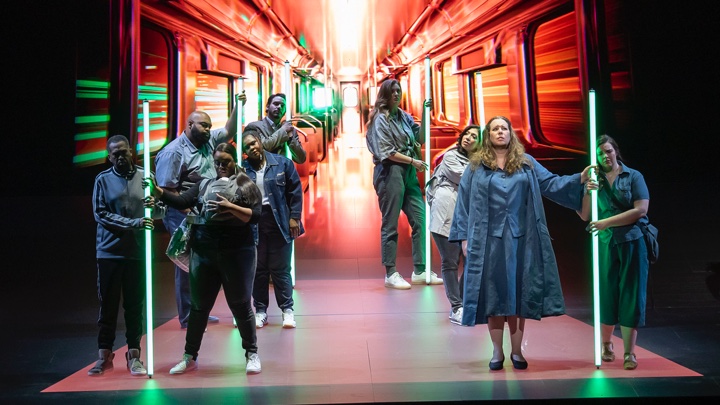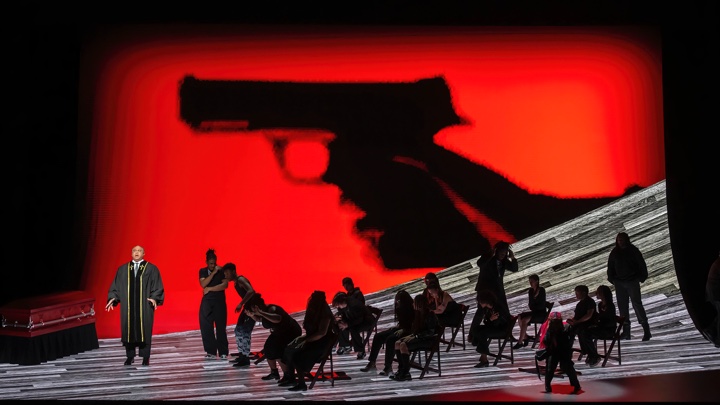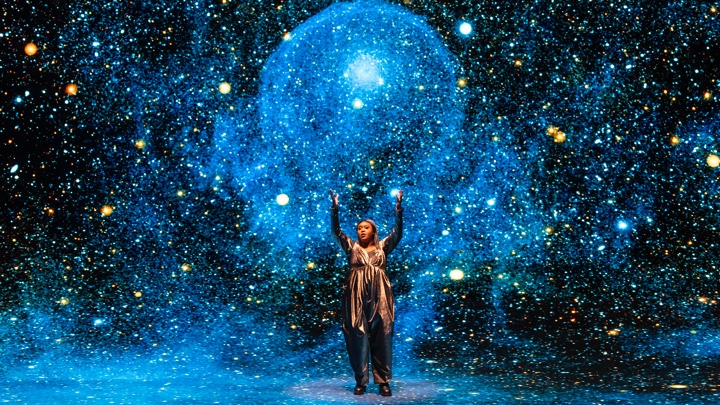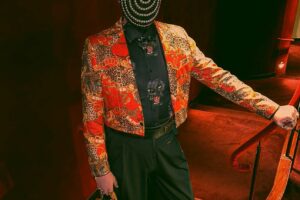

Directed by the ever-imaginative, ever-ingenious Yuval Sharon, we do not see the three pieces in order. Sharon intersperses scenes from each of the pieces within the others to create a cogent whole that sheds light on serious social issues such as gun violence in Chicago, the effect of technology on communication, and the ongoing climate change situation.
Unfortunately, the performance works only fitfully. The Walkers, with music by Daniel Bernard Roumain and libretto by the formidable Anna Deavere Smith, is by far the longest and most affecting of the three. In addition to dialogue between characters, Deavere Smith utilizes quotes from interviews she conducted with real participants in the Chicago gun violence world. Arne Duncan, former Secretary of Education and founder of Chicago CRED (Create Real Economic Destiny) is one of the “real people” introduced, and his words are admirably acted by Jeff Parker.
The “Walkers” are defined as “people who walk beside people who are struggling without giving up on them, no matter how dire the circumstances.” Besides Duncan, the other walkers are Preacher Man (sung powerfully by Gordon Hawkins, though his baritone has developed a distinct wobble) and Curtis Toler, sung by the brilliant tenor Issachah Savage. The three men walk amongst the male and female gangs, trying desperately to diffuse the dangerously violent situations. They are joined by the recently prison-released Bilal (baritone Norman Garrett) who tries to teach the gang members that a life in prison is no life at all.
But when Lil’ Bunchy Bates, an innocent young boy played with real distinction by 13-year old Jamion Cotten is killed in a random shooting, the gangs begin a campaign of recrimination. Kearstin Piper Brown plays the head of the female gang, blamed erroneously for the killing, singing a potent monologue proclaiming her innocence.
Finally, in the last scene, we meet Yasmine Miller, a young mother coping with the random shooting death of her 20-month old baby and the fact that his killer has not, and most likely will not, ever be caught. Miller is sung with power and emotion by soprano Whitney Morrison.
The Walkers is troubling, sentimental, and moving, though it occasionally crosses the line into preachiness. And it’s preaching to the choir, as all Chicagoans know about and deplore the awful gun problem in our city. But the opera illuminates the very personal tragedies in a very human way, which is why it mostly works.
The other two operas are much more problematic. Four Portraits, composed by Caroline Shaw with libretto by Shaw and Jocelyn Clarke, presents four scenes involving two lovers, simply called A and B, trying to find communication and relationship amidst a sea of noisy technology. The first two scenes show B trying to have a phone conversation with A while surrounded by other voices also using phones. Second, B is on a train again surrounded by other voices of other passengers. The music here is unlistenable due to all the noise, and it was very unclear what was specifically happening.
I found this piece rather hazy in plot and heavy-handed in its style. The third scene is one that actually works, and provides some of the only laughs of the afternoon—we find B driving her car home while navigating with a recalcitrant and sometimes philosophical GPS voice system. But despite the fine singing of female baritone Lucia Lucas and countertenor John Holiday as B and A, Four Portraits is ultimately done in by the technology it’s trying to highlight.
The third piece is the very brief Night, composed by John Luther Adams set to a poem by John Haines. Here, a Sybil appears in the night sky, reflecting on humanity and its dangerous damage to the earth. The music here is overly languid and bland, and the poem’s words are mostly imagery of the natural world without any particular effect. This scene felt very much like a workshop of a work-in-progress and needs to be further developed and possibly expanded if it is to be performed again.
The physical production is quite remarkable. Production designers Jason H. Thompson and Kaitlyn Pietras create a giant LED screen on the stage floor, extending up the back wall. On here are projected colorful imagined representations of the scene locations. For instance, in the car scene previously mentioned in Four Portraits, B is driving and we watch illuminated buildings and scenery as she passes. The effect is magical.
Sometimes, however, the images overwhelm the scene, as in Night where the dozens of projected planets, stars, and comets are more arresting than the music. Carlos J. Soto’s costumes work very well in The Walkers’ street clothing, though the drab grey clothes of A and B in Four Portraits do nothing for the wearers. Jody Elff’s sound design is effective in the realistic moments but is too noisy and abrasive in its background sounds.
Conductor Kazem Abdullah does an excellent job of navigating the varying soundscapes of Proximity, keeping the music driving forward even with the abrupt changes of mood and tempo. Members of the Lyric Opera Orchestra played with beauty and precision.
So for me, Proximity is a noble experiment in performance, well directed and staged but ultimately only partially satisfying both musically and dramatically. I would like to see The Walkers expanded both in length and in complexity. With time, the characters and relationships could be explored more deeply. This could easily be a success as a full-length opera.
Photos: Todd Rosenberg





























Comments